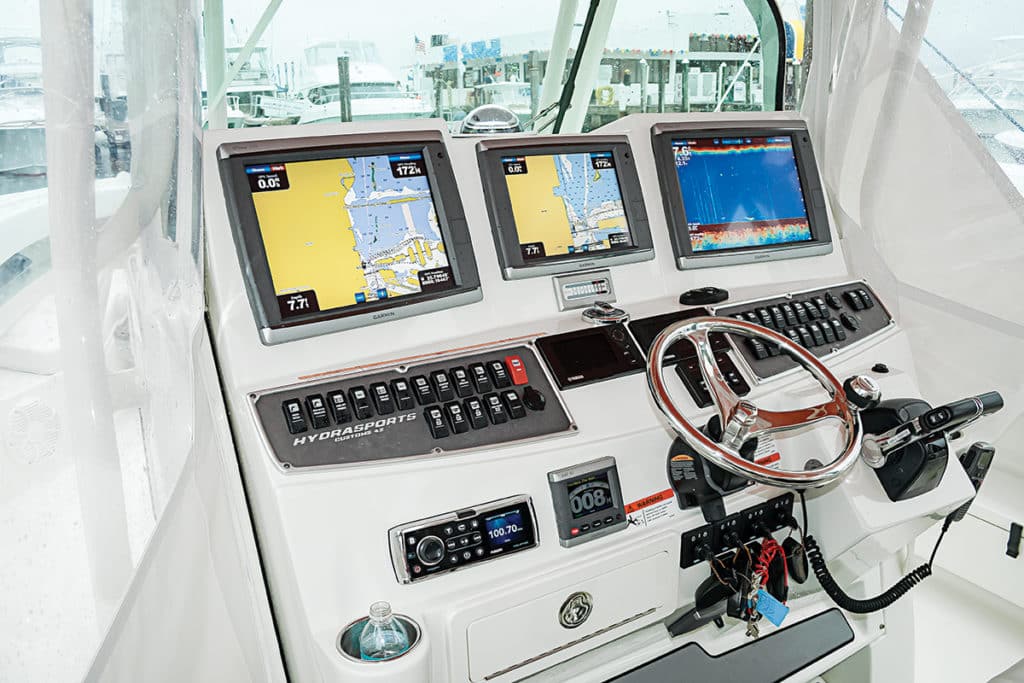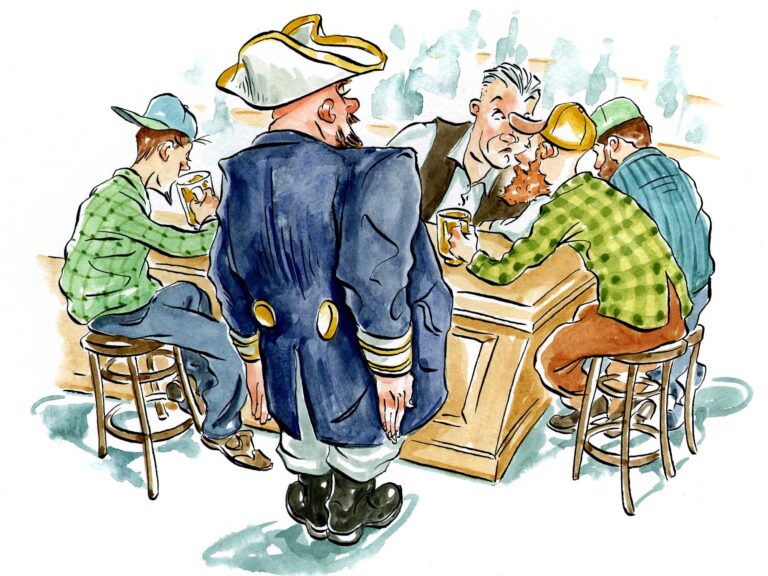
What is the difference between NMEA 0183 and NMEA 2000?
A. Designed by the National Marine Electronics Association, both of these digital languages allow marine electronics units to talk to each other, but NMEA 0183 only allows for short messages to be sent in one direction, such as your GPS sending digital steering commands to your boat’s autopilot.
NMEA 2000, by contrast, allows multiple digital conversations simultaneously and in both directions at lightning speed. Up to 50 devices are able to chatter away, exchanging data among all other instruments on the NMEA 2000 network.
For example, when you install a new fish finder and connect it to an NMEA 2000 network, it begins a dialog with the other instruments on the network. Your fish finder offers to share its depth, boat speed and water-temperature data to other instruments. Your GPS offers position information to your fish finder. Each instrument connection shares its data information with other devices requesting it.
Is NMEA 2000 Replacing 0183?
While most of today’s marine electronics equipment is designed to take advantage of the many features and benefits of NMEA 2000, NMEA 0183 is far from dead. NMEA 0183 still does a pretty good job of shuttling short data messages from one instrument to another. Fortunately, 2000 and 0183 can coexist. There are a number of earlier equipment models that only have 0183 interface ability and cannot directly connect to NMEA 2000 devices.
0183 to 2000 Converters
There are converters or bridges that can allow 0183 and 2000 gear to exchange data in either direction: 0183 to 2000 or 2000 to 0183. The Actisense NGW-1 Gateway (actisence.com) is a good example.
Same Language, Different Dialects
Although NMEA 2000 is a universal standard recognized and adopted by most all marine electronics manufacturers, some companies have their own unique version of NMEA 2000. These versions may add an additional feature or two that may benefit some of the products they make. Often the main difference among manufacturers is the use of their own proprietary connectors used on the back of their products and on the ends of the cables that connect to their equipment.
NMEA 2000 Adapters
Companies such as B&G, Lowrance, Raymarine, Simrad and a few others have their own special connectors. Since they all conform to NMEA 2000 standards, it is simply a matter of using an adapter cable, which each manufacturer has available to connect to other NMEA 2000-compatible equipment.
Read Next: Six Tips for Ensuring Proper NMEA 2000 Connections
Furuno and Garmin are two companies that use pure NMEA 2000 connectors that are exactly as specified under the NMEA 2000 standards. This means no special adapters are needed, which tends to simplify installation.
Troubleshooting Aid
Keep in mind that NMEA 2000 has a simple built-in fault-finding feature that helps you isolate network problems should a system failure occur. To find the source of the problem, any instrument or device that is connected to the NMEA 2000 network can be quickly and easily disconnected from the system to determine if the difficulty disappears. This can be done with each instrument, one at a time. If the system resumes to work properly, then you have located the source of the problem, and the disconnected set or the connections to it are at fault.
Creating a Basic NMEA 2000 Network
An NMEA network consists of a special cable bus called a backbone or trunk line. It acts like the main artery that can be run throughout the boat to wherever your various instruments are located. A drop or spur cable connects each instrument to the main backbone cable. This integrates all your electronics and devices together to form a network. Adding additional equipment in the future becomes a simple task by connecting another drop cable to the system’s backbone.
How to Build an NMEA Network (click or search the links below)
Garmin
Technical Reference for Garmin NMEA 2000 Products
Actisense
Your complete guide to building an NMEA 2000® network – Actisense
Maretron
Knowledge Base









